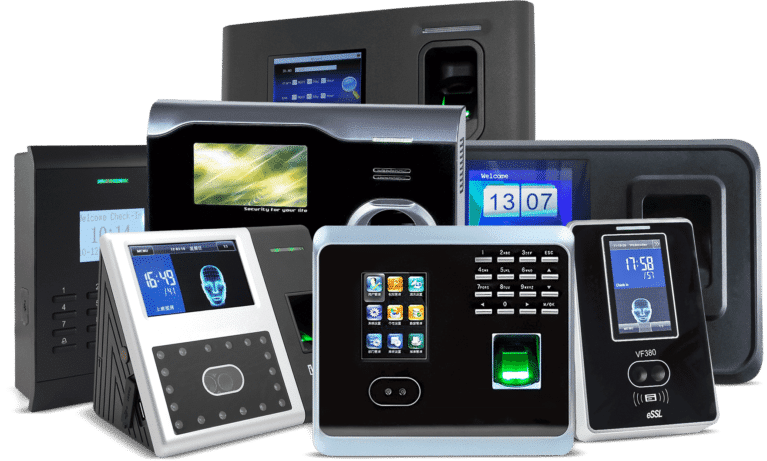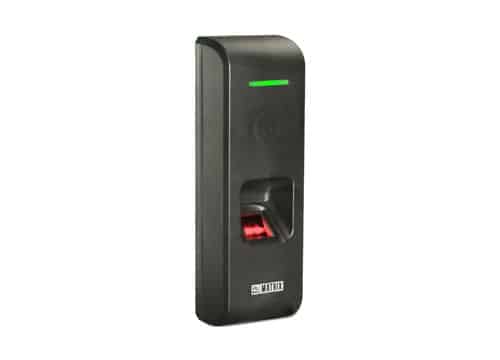- Home
- About Us
- Products
- Electronic Article Surveillance System EAS / Retail Anti theft Systems
- Display Stands
- Restaurant Pager
- People Counting Systems
- Queue Management Systems
- Access Control System
- Time Attendance Systems
- Audio & Visual System Solutions
- Display Solutions
- CCTV Cameras in Qatar: Enhancing Security Solutions
- Time Lapse Construction Camera
- Flap Barrier, Speed Gates, Turnstiles Access Control
- Gate Barriers System & Bollards in Qatar
- Parking Management & Gate Automation
- Library Management Systems
- IT & Telecom
- Lockers & Key Management Systems
- Intrusion Alarm System
- Perimeter Security
- Vehicle Tracking
- Time Recorders & Time Stamps
- Emergency Exit Door Alarms
- Clients
- Contact Us
- Support
Contents
- 1 Employee Time Attendance System Provider in Qatar: Your Comprehensive Guide
- 1.1 What Are Employee Time Attendance System Provider in Qatar?
- 1.1.1 How Do Employee Time Attendance Systems Work?
- 1.1.2 Different Models of Employee Time Attendance Systems in Qatar
- 1.1.3 Benefits of Employee Time Attendance Systems in Qatar
- 1.1.4 Case Study 1: Enhancing Efficiency in a Manufacturing Company
- 1.1.5 Case Study 2: Streamlining Operations in a Retail Chain
- 1.1 What Are Employee Time Attendance System Provider in Qatar?
Employee Time Attendance System Provider in Qatar: Your Comprehensive Guide
In today’s competitive business environment, effective time management is crucial for any organization. One of the key elements in achieving this is the implementation of a reliable employee time attendance system. For businesses in Qatar, having a dependable provider is essential to ensure accurate tracking and management of employee work hours. This blog post will cover everything you need to know about employee time attendance system provider in Qatar, including their benefits, how they work, different models, and case studies.
What Are Employee Time Attendance System Provider in Qatar?
employee time attendance system provider in Qatar offer solutions that help organizations track and manage employee time attendance system provider in Qatar, working hours, overtime, and leave. These systems are designed to enhance productivity, ensure compliance with labor laws, and simplify payroll processing. In Qatar, a growing number of businesses are turning to these advanced systems to streamline their operations and boost efficiency.
How Do Employee Time Attendance Systems Work?
employee time attendance system provider in Qatar typically consist of hardware and software components that work together to ensure accurate tracking and management of employee attendance. Here’s an expanded breakdown of how these systems work:
Clock-In/Clock-Out Mechanism
The first step in the process is recording the exact time an employee begins and ends their workday. This is done using various methods, each with its own set of advantages:
- Biometric Scans: Biometric systems use unique biological characteristics such as fingerprints or facial recognition to verify an employee’s identity. This method is highly secure and reduces the risk of “buddy punching,” where one employee clocks in for another.
- RFID Cards: Employees are issued RFID (Radio Frequency Identification) cards that they swipe or tap against a reader to clock in and out. This method is straightforward and efficient, especially for environments where biometric systems might not be suitable.
- Mobile Apps: For remote or mobile employees, attendance can be tracked using mobile apps. These apps often include GPS functionality to verify the employee’s location at the time of clocking in or out, ensuring they are at the correct site.
- Web Portals: Some systems allow employees to log their time via a secure web portal, accessible from any device with internet connectivity. This method is particularly useful for companies with remote workers or multiple office locations.
Data Collection
Once employees clock in and out, the system collects this data in real-time. This immediate data capture ensures that all information is up-to-date and accurate. The data is typically stored in a central database, which can be cloud-based or on-premises, depending on the system.
Data Processing
After collecting the clock-in/out data, the system processes it to calculate the total working hours for each employee. This includes:
- Regular Hours: Calculation of standard working hours based on the employee’s schedule.
- Overtime: Identification and calculation of overtime hours worked beyond the regular schedule.
- Leave Management: Integration with leave records to account for days off, sick leave, or vacation days. This helps in providing a complete picture of an employee’s attendance.
The software ensures that all calculations adhere to company policies and local labor laws, minimizing the risk of compliance issues.
Reporting and Analytics
One of the significant advantages of modern employee time attendance system provider in Qatar is their ability to generate detailed reports and analytics. Managers can access a variety of reports to gain insights into attendance patterns, productivity, and overall workforce management. Common types of reports include:
- Daily/Weekly/Monthly Attendance Reports: Overview of attendance records for specific periods.
- Absenteeism Reports: Identification of patterns in absenteeism, helping to address potential issues proactively.
- Overtime Reports: Detailed breakdown of overtime hours worked, which is crucial for managing labor costs.
- Productivity Reports: Analysis of employee productivity based on attendance and working hours.
These reports can be customized to meet the specific needs of the organization, providing actionable insights to improve workforce management.
Integration
Many employee time attendance systems are designed to integrate seamlessly with other business software, particularly payroll systems. This integration offers several benefits:
- Automated Data Transfer: Attendance data is automatically fed into the payroll system, eliminating the need for manual data entry and reducing the risk of errors.
- Streamlined Payroll Processing: Accurate and up-to-date attendance data ensures that employees are paid correctly for the hours they have worked, including any overtime.
- Compliance: Integration with payroll software helps ensure that the company remains compliant with labor laws and regulations regarding working hours and overtime payments.
Additionally, some systems offer API integrations with HR management software, project management tools, and other business applications, further enhancing their functionality and value.
Additional Features and Advancements
Modern employee time attendance systems continue to evolve, incorporating advanced features and technologies to enhance their effectiveness:
- AI-Powered Analytics: Artificial intelligence can be used to analyze attendance data, identify trends, and provide predictive insights to improve workforce planning.
- Cloud-Based Solutions: Cloud-based systems offer greater flexibility and scalability, allowing businesses to access attendance data from anywhere with an internet connection.
- Advanced Security Features: Enhanced security measures, such as multi-factor authentication and data encryption, ensure that attendance data is protected against unauthorized access.
By leveraging these features, businesses can optimize their attendance management processes, improve employee accountability, and gain valuable insights to drive better decision-making.
Different Models of Employee Time Attendance Systems in Qatar
Selecting the right employee time attendance system depends on various factors such as the nature of your business, the number of employees, and specific operational needs. Here, we delve into the different models of employee time attendance systems available in Qatar, highlighting their features, benefits, and ideal use cases.
Biometric Time Attendance Systems
Overview: Biometric time attendance systems use unique biological traits such as fingerprints, facial features, or iris patterns to verify an employee’s identity. This method ensures high accuracy and security, making it one of the most reliable ways to track attendance.
Features:
- Fingerprint Recognition: Employees clock in by scanning their fingerprint on a biometric reader.
- Facial Recognition: Utilizes cameras to capture and recognize facial features.
- Iris Recognition: Scans the unique patterns in an employee’s iris for clocking in and out.
- High Security: Biometric data is nearly impossible to forge or duplicate.
- Real-Time Data Collection: Instantly records attendance data, reducing time theft and buddy punching.
Benefits: employee time attendance system provider in Qatar
- Enhanced Accuracy: Eliminates the risk of time fraud and inaccuracies associated with manual entry.
- Improved Security: Ensures that only authorized employees can clock in or out.
- Convenience: Quick and easy for employees to use, reducing queuing times at clock-in stations.
Ideal Use Cases: employee time attendance system provider in Qatar
- Manufacturing Plants: High-security environments where employee verification is crucial.
- Healthcare Facilities: Ensures that only authorized personnel access sensitive areas.
- Corporate Offices: Provides secure and accurate attendance tracking for large workforces.
RFID Time Attendance Systems employee time attendance system provider in Qatar
Overview: RFID (Radio Frequency Identification) time attendance systems use RFID cards or tags to record employee attendance. Employees simply swipe or tap their RFID card against a reader to clock in and out.
Features: employee time attendance system provider in Qatar
- RFID Cards/Tags: Employees are issued unique RFID cards or tags.
- Reader Devices: Installed at entry and exit points to capture attendance data.
- User-Friendly: Easy for employees to use, with minimal training required.
- Durability: RFID cards are durable and resistant to wear and tear.
Benefits: employee time attendance system provider in Qatar
- Simplicity: Straightforward method that is easy to implement and use.
- Reliability: Provides consistent and reliable data collection.
- Cost-Effective: Often more affordable than biometric systems, especially for smaller businesses.
Ideal Use Cases: employee time attendance system provider in Qatar
- Retail Stores: Easy and quick clock-in/out for staff across various shifts.
- Educational Institutions: Efficient tracking of student and staff attendance.
- Logistics and Warehousing: Simplifies attendance tracking for large numbers of employees.
Mobile Time Attendance Systems
Overview: Mobile time attendance systems use smartphone apps to track employee attendance. These systems are particularly beneficial for remote or mobile workers, as they allow employees to clock in and out from their mobile devices.
Features: employee time attendance system provider in Qatar
- Mobile Apps: Employees use a dedicated app to log their attendance.
- GPS Tracking: Verifies the location of employees when they clock in or out, ensuring they are at the correct site.
- Geofencing: Sets virtual boundaries that define the allowable area for clocking in/out.
- Push Notifications: Sends reminders and alerts to employees about their attendance status.
Benefits: employee time attendance system provider in Qatar
- Flexibility: Ideal for remote workers, field staff, and employees who are frequently on the move.
- Real-Time Monitoring: Provides real-time data and location verification.
- Enhanced Productivity: Reduces the need for employees to travel to a fixed clock-in location.
Ideal Use Cases: employee time attendance system provider in Qatar
- Remote Workforce: Companies with employees working from home or in the field.
- Construction Sites: Tracks attendance of workers at various job sites.
- Sales Teams: Enables sales representatives to log their hours and locations easily.
Web-Based Time Attendance Systems
Overview: Web-based time attendance systems are accessible from any device with an internet connection. These systems are perfect for businesses with multiple locations or remote employees, offering flexibility and ease of access.
Features: employee time attendance system provider in Qatar
- Web Portals: Employees can log in and out through a secure web portal.
- Cross-Device Compatibility: Accessible via desktops, laptops, tablets, and smartphones.
- Cloud-Based Storage: Stores attendance data securely in the cloud, ensuring it is always available and up-to-date.
- Scalability: Easily scales to accommodate businesses of any size.
Benefits: employee time attendance system provider in Qatar
- Accessibility: Employees can access the system from anywhere, at any time.
- Centralized Management: Provides a single platform for managing attendance across multiple locations.
- Data Security: Ensures secure data storage and backup, reducing the risk of data loss.
Ideal Use Cases: employee time attendance system provider in Qatar
- Multi-Location Businesses: Companies with several branches or offices.
- Remote Teams: Organizations with remote employees or teams working from different locations.
- SMEs to Large Enterprises: Suitable for businesses of all sizes due to its scalability and flexibility.
Benefits of Employee Time Attendance Systems in Qatar
Implementing an employee time attendance system offers numerous advantages for businesses in Qatar. These systems not only streamline the process of tracking employee work hours but also provide valuable insights and operational efficiencies. Below is an expanded discussion of the key benefits:
Increased Accuracy
Elimination of Manual Errors: Manual attendance tracking is prone to human error, which can lead to inaccurate records and payroll discrepancies. Time attendance systems automate the process, ensuring that all data captured is precise and reliable.
Accurate Payroll Processing: With automated data collection, the attendance system provides accurate inputs for payroll calculations. This reduces the likelihood of errors in calculating hours worked, overtime, and leave balances, ensuring employees are paid correctly and on time.
Reduced Time Theft: Advanced systems, especially those using biometric technology, prevent practices like “buddy punching” (one employee clocking in for another). This ensures that the recorded attendance accurately reflects actual working hours.
Enhanced Productivity
Automated Attendance Tracking: Automation reduces the administrative burden on HR and management. Instead of manually entering and verifying attendance data, HR professionals can rely on the system to handle these tasks, allowing them to focus on more strategic activities.
Streamlined Operations: By automating routine processes, businesses can streamline their operations. Managers can quickly access attendance data, generate reports, and make informed decisions without the need for time-consuming manual processes.
Employee Self-Service: Many modern systems include self-service portals where employees can view their attendance records, apply for leave, and check their schedules. This reduces the number of inquiries to HR, freeing up their time for other tasks.
Compliance
Adherence to Labor Laws: Qatar has specific labor laws regarding working hours, overtime, and leave entitlements. Time attendance systems ensure that all recorded data complies with these regulations, minimizing the risk of legal issues and penalties.
Accurate Record-Keeping: Maintaining accurate and detailed attendance records is crucial for compliance audits. These systems store all attendance data securely and make it easily retrievable for any required compliance checks.
Policy Enforcement: Automated systems help enforce company policies consistently. Whether it’s adhering to working hour limits, managing overtime, or tracking leave, the system ensures that all rules are applied uniformly across the organization.
Data-Driven Insights
Detailed Reports: Time attendance systems generate comprehensive reports on various metrics such as attendance patterns, punctuality, absenteeism, and overtime. These reports provide valuable insights into employee behavior and operational efficiency.
Analytics for Workforce Management: Advanced analytics tools can identify trends and patterns in attendance data. For instance, frequent absenteeism in a particular department might indicate underlying issues that need to be addressed.
Improved Decision-Making: Access to accurate data enables managers to make informed decisions regarding scheduling, staffing levels, and resource allocation. This leads to better management of the workforce and improved operational efficiency.
Cost Savings
Reduced Payroll Errors: Automated attendance systems minimize errors in payroll calculations, ensuring employees are paid correctly. This reduces the need for payroll corrections and adjustments, saving time and resources.
Lower Administrative Costs: By automating time and attendance tracking, businesses can reduce the administrative workload on HR and management. This can lead to significant cost savings as fewer resources are needed to manage attendance data.
Enhanced Operational Efficiency: With accurate data and streamlined processes, businesses can optimize their operations. Efficient workforce management leads to reduced downtime, better utilization of resources, and overall cost savings.
Case Study 1: Enhancing Efficiency in a Manufacturing Company
A manufacturing company in Qatar faced significant challenges with manual attendance tracking, leading to inefficiencies and errors in payroll processing. The HR team spent considerable time each week reconciling attendance records, which was both labor-intensive and prone to inaccuracies.
Implementation of Biometric Time Attendance System: To address these challenges, the company decided to implement a biometric time attendance system. Employees were equipped with fingerprint scanners for clocking in and out. This biometric technology ensured accurate identification of employees and prevented instances of buddy punching or fraudulent attendance.
Automation and Integration: The biometric data collected from the fingerprint scanners was automatically processed and integrated with the company’s payroll system. This automation streamlined the entire attendance tracking and payroll processing workflow, eliminating the need for manual data entry and verification.
Results: Following the implementation of the biometric time attendance system, the manufacturing company experienced significant improvements:
- 20% Increase in HR Productivity: With automated attendance tracking, the HR team saved hours previously spent on manual reconciliation tasks. This allowed them to focus more on strategic HR initiatives and employee engagement.
- Reduction in Payroll Errors: By eliminating manual entry errors and ensuring accurate data integration, the company minimized payroll discrepancies and ensured that employees were paid correctly and on time.
The biometric system not only enhanced operational efficiency but also improved overall employee satisfaction by ensuring fair and accurate compensation.
Case Study 2: Streamlining Operations in a Retail Chain
A leading retail chain in Qatar operates multiple stores across different locations, posing challenges in managing and tracking employee attendance effectively.
Adoption of Web-Based Time Attendance System: To streamline attendance management and improve operational efficiency, the retail chain implemented a web-based time attendance system. This system allowed employees to clock in and out using their smartphones or tablets, providing flexibility and convenience, especially for staff working across various store locations.
Real-Time Visibility and Data-Driven Insights: The web-based system provided real-time visibility into attendance patterns and employee schedules. Managers could access detailed reports and analytics, enabling them to make informed decisions about staffing levels, shifts, and scheduling adjustments based on actual attendance data.
Results: The adoption of the web-based time attendance system yielded several benefits for the retail chain:
- 15% Improvement in Employee Punctuality: With better visibility and accountability, employees were more punctual in adhering to their scheduled shifts.
- Efficient Payroll Process: The system facilitated a more efficient payroll process by providing accurate attendance data directly integrated into the payroll system. This reduced administrative overhead and ensured timely and accurate payroll processing.
By leveraging technology to automate attendance tracking and enhance visibility across its operations, the retail chain optimized workforce management and operational efficiency.
Common FAQs- employee time attendance system provider in Qatar
Q1: What is the best way to use an employee time attendance system? A1: The best way to use an employee time attendance system is to ensure that all employees are trained on how to use the system correctly. Regularly monitor the data and reports generated to make informed decisions about workforce management.
Q2: How can I choose the right model for my business? A2: Consider factors such as the size of your business, the nature of your workforce (remote or on-site), and your specific requirements (biometric security, mobile access). Consulting with a provider like Axle Systems can help you make the right choice.
Q3: Can these systems integrate with existing payroll software? A3: Yes, most modern employee time attendance systems offer integration with popular payroll software, ensuring seamless data transfer and reducing manual entry errors.
Q4: How secure are biometric time attendance systems? A4: Biometric systems are highly secure, as they use unique biological characteristics (fingerprints, facial features) that are difficult to replicate or forge.
Q5: What are the costs involved in implementing a time attendance system? A5: Costs vary depending on the type of system, the number of employees, and additional features required. It’s best to get a customized quote from a provider like Axle Systems.
Contact Axle Systems for employee time attendance system provider in Qatar
If you are looking for a reliable distributor of employee time attendance system provider in Qatar, contact Axle Systems. We offer a range of solutions tailored to meet the needs of businesses of all sizes. Our team of experts will work with you to find the best system for your organization, ensuring seamless integration and maximum efficiency.
Additional Information
Employee time attendance systems are continually evolving, with new technologies being introduced to enhance functionality and user experience. Some of the latest advancements include:
- AI-Powered Analytics: Leveraging artificial intelligence to provide deeper insights into attendance patterns and workforce productivity.
- Cloud-Based Solutions: Offering greater flexibility and scalability, allowing businesses to access attendance data from anywhere.
- Advanced Security Features: Enhancing security with multi-factor authentication and encryption.
Conclusion
Implementing a reliable employee time attendance system provider in Qatar is essential for any business looking to improve productivity, ensure compliance, and streamline payroll processing. By choosing a trusted provider like Axle Systems, you can benefit from the latest technologies and expert support, ensuring that your business operations run smoothly and efficiently.
For more information and to explore the best employee time attendance system provider in Qatar for your organization, contact Axle Systems today. Let us help you take your business to the next level with our state-of-the-art solutions.





